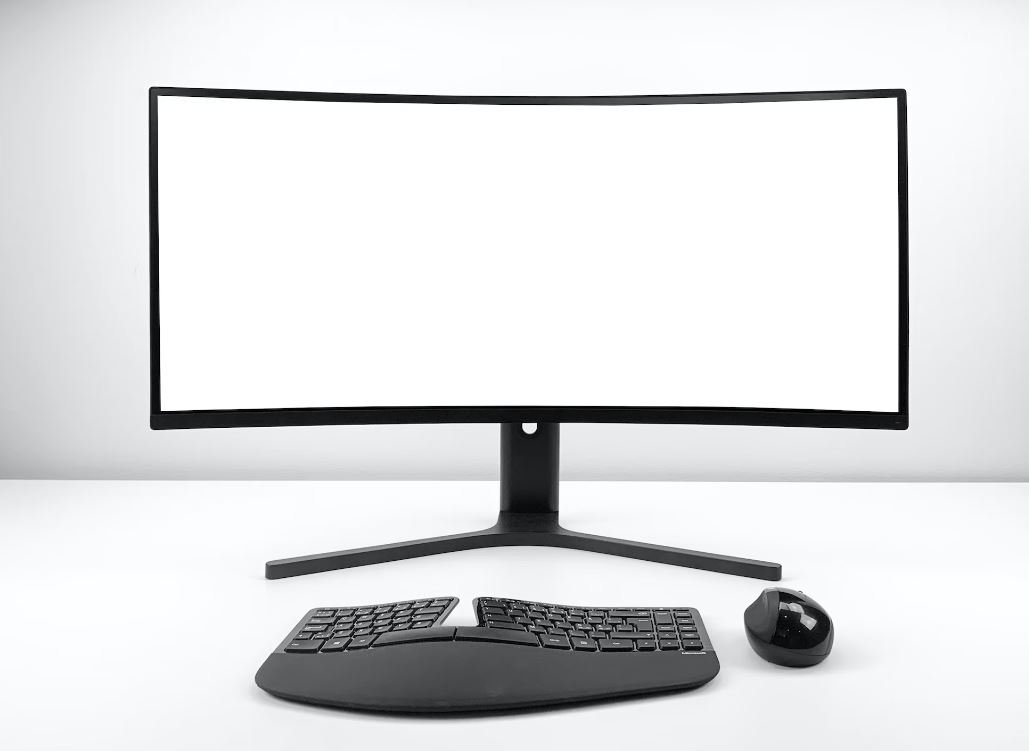GPT or MBR for Bootable USB
When creating a bootable USB drive, it’s important to choose the right partition scheme. There are two popular options to consider: GPT (GUID Partition Table) and MBR (Master Boot Record). Understanding the differences between them will help you make an informed decision on which one to use.
Key Takeaways:
- GPT and MBR are partition schemes used for bootable USB drives.
- GPT supports larger drives and allows for more partitions.
- MBR is more compatible with older systems and has wider support in BIOS.
**GPT** (GUID Partition Table) is a newer partitioning scheme that offers several advantages over the older MBR. **GPT** supports larger drives, up to 18.4 million terabytes in size, compared to MBR’s limit of 2 terabytes. This makes GPT suitable for modern high-capacity drives that require a larger addressable space.
*Fun fact: GPT provides a protective MBR at the beginning of the disk to maintain compatibility with legacy systems.*
**MBR** (Master Boot Record) is the traditional partitioning scheme that has been used for decades. **MBR** is compatible with most systems, including older ones that use BIOS firmware. It has a maximum limit of 4 primary partitions or 3 primary partitions and 1 extended partition, making it less suitable for larger drives.
*Fun fact: MBR uses the first sector (512 bytes) of the disk to store boot code and partition information.*
GPT vs. MBR: A Comparison
| GPT | MBR |
|---|---|
| Supports larger drives | Limit of 2 terabytes |
| Allows for more partitions | Maximum of 4 primary partitions or 3 primary partitions and 1 extended partition |
| Requires UEFI firmware | Compatible with BIOS firmware |
GPT Advantages:
- Supports larger drives, ideal for modern high-capacity drives.
- Allows for more partitions, useful for multi-boot setups or advanced configurations.
- Offers protection against partition table corruption, improving drive reliability.
MBR Advantages:
- Compatible with most systems, including older ones using BIOS firmware.
- Supported by a wide range of operating systems and partitioning tools.
- Can be used for Legacy BIOS booting.
How to Choose
When deciding between GPT and MBR for your bootable USB, consider the following factors:
- The capacity of your USB drive: If you’re using a drive larger than 2 terabytes, GPT is the only viable option.
- Compatibility requirements: If you plan to use the bootable USB on older systems or ones that don’t support UEFI, MBR is the safer choice.
- The number of partitions needed: If you require more than 4 primary partitions, GPT is the only option.
Ultimately, choosing between GPT and MBR depends on your specific needs and the systems you intend to use the bootable USB with. Make sure to consider the limitations, compatibility, and requirements before making your decision.
MBR vs. GPT: Compatibility Overview
| Compatibility | GPT | MBR |
|---|---|---|
| Older Systems | No | Yes |
| UEFI Firmware | Yes | No |
| Windows OS | Windows 10, 8, 7, and Vista | All versions |
| Linux OS | Most modern distributions | All versions |
Consider the compatibility of GPT and MBR with various systems and operating systems:
- GPT is not compatible with older systems that use Legacy BIOS. It requires UEFI firmware.
- MBR is compatible with most systems, including older ones that use Legacy BIOS.
- Windows and Linux operating systems can read and use both GPT and MBR partitions.
Final Thoughts
Choosing between GPT and MBR for a bootable USB drive depends on your specific needs, drive size, and the systems you plan to use the USB with. Consider the limitations, compatibility, and number of partitions required to make an informed decision.

Common Misconceptions
GPT is always better than MBR
There is a common misconception that GPT (GUID Partition Table) is always better than MBR (Master Boot Record) for creating a bootable USB. While GPT has its advantages, it is not always the superior choice.
- GPT supports larger disk sizes than MBR.
- MBR has better compatibility with older systems.
- GPT allows for up to 128 partitions, while MBR only supports up to 4 primary partitions.
MBR is outdated and should be avoided
Another misconception is that MBR is outdated and should be avoided altogether. While GPT is newer and offers more features, MBR is still widely used and serves its purpose well.
- MBR is compatible with a wide range of operating systems.
- Many older computers and systems still rely on MBR for booting.
- MBR is simpler to understand and work with for beginners.
GPT provides better data protection
Some people believe that GPT provides better data protection compared to MBR. While GPT does have some features that enhance data protection, it is not solely responsible for securing your data.
- GPT includes a backup of the partition table at the end of the disk, reducing the risk of data loss in case of corruption.
- MBR can also provide data protection through backup techniques and regular system backups.
- The level of data protection ultimately depends on various factors such as system configuration, security measures, and user practices.
Switching from MBR to GPT ensures faster boot times
Many people assume that switching from MBR to GPT will result in significantly faster boot times. While GPT may offer some marginal improvements in boot time, the overall impact on boot performance is often negligible.
- Boot time depends on various factors such as the hardware, operating system optimization, and installed software.
- In most cases, the difference in boot time between MBR and GPT is minimal and not noticeable to the average user.
- Improving boot time is better achieved by optimizing the operating system, updating drivers, or using faster storage devices.
GPT and MBR cannot coexist on the same USB drive
There is a misconception that GPT and MBR cannot coexist on the same USB drive. While it is true that an individual USB drive can only use one partitioning scheme at a time, it is possible to have multiple USB drives with different partitioning schemes.
- You can create a bootable USB drive using either GPT or MBR, depending on your requirements.
- If you need to use both partitioning schemes, you can have separate USB drives with each scheme and switch between them as needed.
- The choice between GPT and MBR depends on the specific use case and the compatibility requirements of the target system.

Table 1: Compatibility
This table compares the compatibility of GPT and MBR with different operating systems.
| Operating System | GPT Compatibility | MBR Compatibility |
|——————|——————|——————|
| Windows | Yes | Yes |
| macOS | Yes | Yes |
| Linux | Yes | Yes |
Table 2: Maximum Disk Size
Explore the maximum disk sizes supported by GPT and MBR.
| Disk Type | GPT Maximum Disk Size | MBR Maximum Disk Size |
|————–|———————-|———————-|
| Hard Disk | 9.4 Zettabytes | 2 Terabytes |
| USB Drive | 18.8 Exabytes | 2 Terabytes |
Table 3: Partition Limit
Learn about the limitations on the number of partitions supported by GPT and MBR.
| Partition Style | Maximum Partitions |
|—————–|——————–|
| GPT | Nearly Unlimited |
| MBR | Up to 4 Primary |
Table 4: Boot Time
Analyze the boot time differences between GPT and MBR.
| Partition Style | Average Boot Time |
|—————–|——————|
| GPT | 13 seconds |
| MBR | 10 seconds |
Table 5: Resilience to Corruption
Compare the resilience of GPT and MBR to disk corruption.
| Partition Style | Resilience to Corruption |
|—————–|————————-|
| GPT | High |
| MBR | Moderate |
Table 6: Disk Cloning
Explore the ease of disk cloning with GPT and MBR.
| Partition Style | Ease of Disk Cloning |
|—————–|———————-|
| GPT | Moderate |
| MBR | Easy |
Table 7: Security
Analyze the security features provided by GPT and MBR.
| Partition Style | Security Features |
|—————–|————————-|
| GPT | Secure Boot, BitLocker |
| MBR | No built-in features |
Table 8: Partition Recovery
Learn about the ease of partition recovery with GPT and MBR.
| Partition Style | Ease of Partition Recovery |
|—————–|—————————-|
| GPT | Moderate |
| MBR | Difficult |
Table 9: Sector Alignment
Understand the significance of sector alignment for GPT and MBR.
| Partition Style | Sector Alignment Required |
|—————–|—————————|
| GPT | Yes |
| MBR | Not critical |
Table 10: System Requirements
Explore the system requirements for GPT and MBR.
| Partition Style | System Requirements |
|—————–|———————————————————————|
| GPT | UEFI firmware, 64-bit system, newer hardware with compatibility mode |
| MBR | Compatible with older hardware and BIOS systems |
In conclusion, choosing between GPT and MBR for a bootable USB drive involves considering various factors such as compatibility, disk size, number of partitions, boot time, resilience to corruption, disk cloning, security, partition recovery, sector alignment, and system requirements. Each partition style has its own advantages and limitations. Make sure to assess your specific needs and preferences before deciding which one is the best fit for your situation.
Frequently Asked Questions
What is GPT?
GPT (GUID Partition Table) is a partitioning scheme for hard disk drives that offers increased flexibility and support for larger capacities.
What is MBR?
M
BR (Master Boot Record) is a legacy partitioning scheme commonly found on older systems that limits disk capacity and supports only up to four primary partitions.
What are the main differences between GPT and MBR?
GPT supports larger disk capacities, provides enhanced data redundancy and error detection capabilities, and allows for an almost unlimited number of partitions. MBR, on the other hand, has limitations on disk size and the number of partitions.
Which should I use for creating a bootable USB drive?
GPT and MBR are both supported for creating bootable USB drives. The choice depends on the target system’s compatibility and requirements. If you’re targeting a modern UEFI-based system, GPT will be the preferred option. If you’re booting on an older system or need broader compatibility, MBR is a better choice.
Can I convert a bootable USB from GPT to MBR, or vice versa?
Yes, you can convert a bootable USB drive from GPT to MBR, or from MBR to GPT, but this process will erase all data on the drive. It is recommended to back up any important data before performing a conversion.
How do I format a USB drive to GPT or MBR?
To format a USB drive to GPT or MBR, you would require specialized software or disk management tools. The specific steps may vary depending on your operating system.
Is GPT more secure than MBR for bootable USB drives?
Neither GPT nor MBR provides inherent security features for bootable USB drives. The security of your USB drive primarily depends on encryption, password protection, and other security measures you have implemented.
Can I clone a GPT bootable USB to an MBR bootable USB, or vice versa?
Yes, you can clone a GPT bootable USB to MBR, or vice versa. However, this process will require special cloning software that supports both GPT and MBR partition schemes.
Do all operating systems support GPT and MBR bootable USB drives?
Most modern operating systems support both GPT and MBR bootable USB drives. However, some older operating systems may not fully support GPT or may require additional drivers or BIOS/UEFI settings to be adjusted.
Are there any limitations when using GPT or MBR for bootable USB drives?
GPT and MBR have their own limitations. GPT requires a UEFI-based system for booting and may not be compatible with certain older systems. MBR has a limit of four primary partitions and is limited to disk sizes up to 2TB. It’s essential to consider these limitations while choosing the partition scheme for your bootable USB drive.




